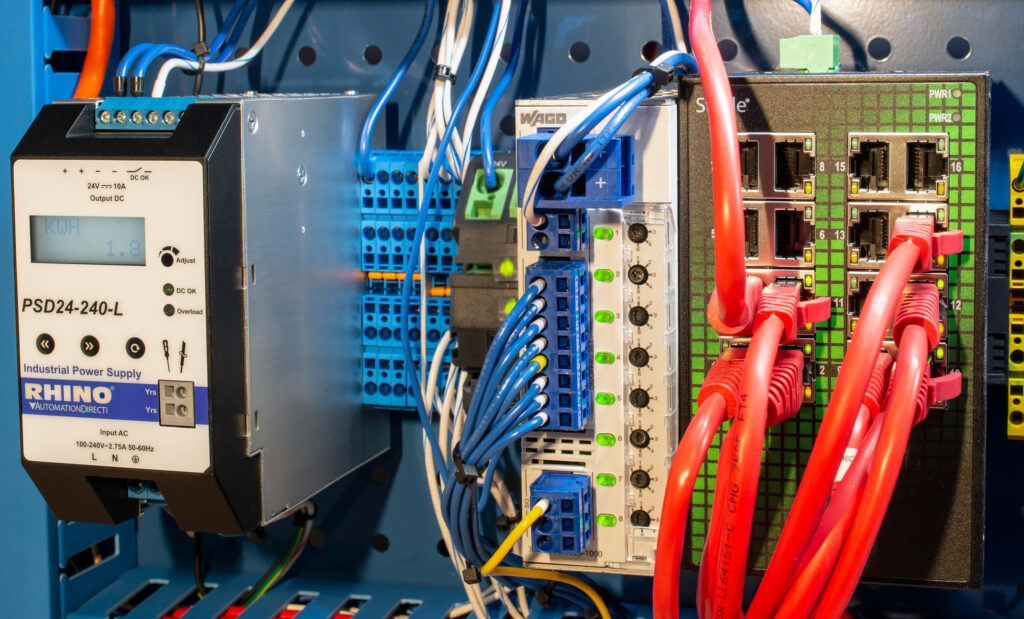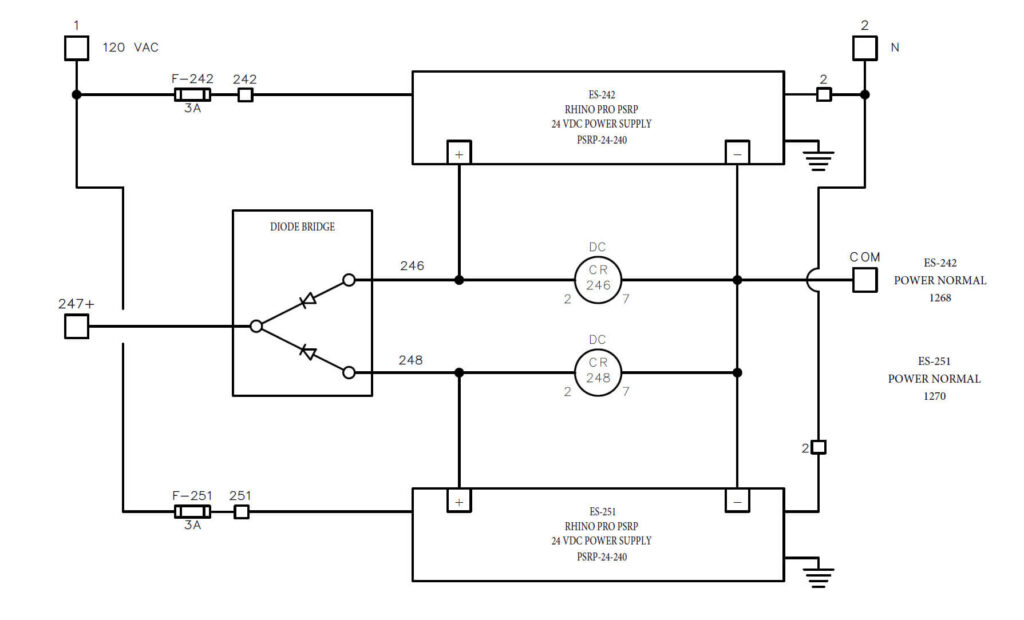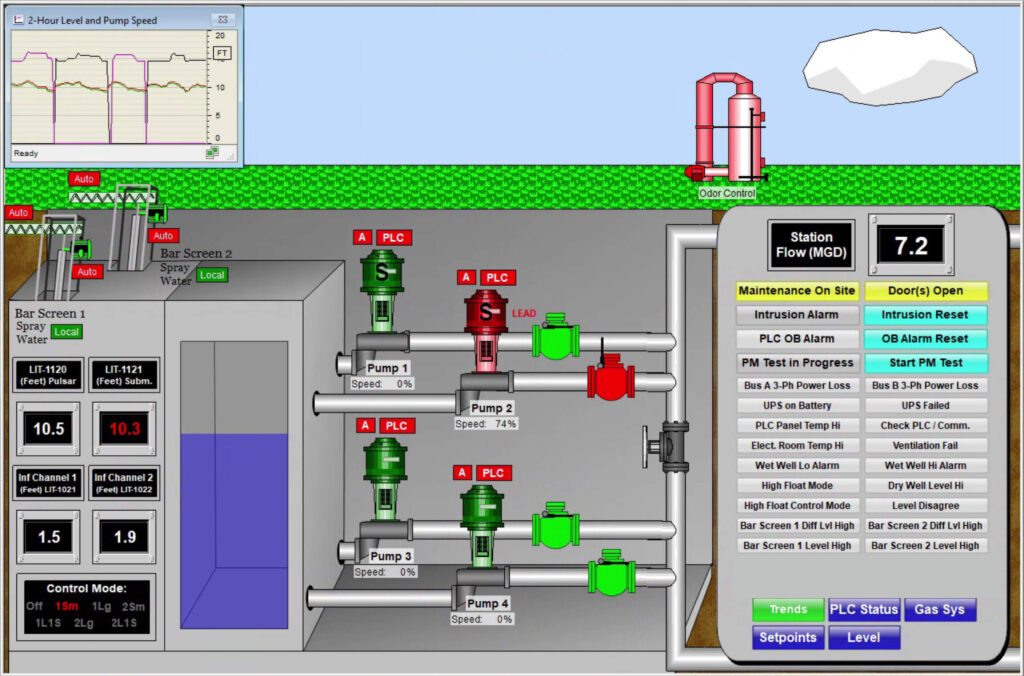You have no items in your shopping cart.
There are many practical and cost-effective ways for designers to incorporate automation redundancy for systems of any size.

Automation redundancy has largely been reserved for larger process automation systems due to cost and complexity. However, there are now more products and design strategies suitable for applying redundancy to smaller-scale systems.
Costly Conditions
Where possible, automation designers prefer to avoid single points of failure, which can lead to poor outcomes ranging from minor inconveniences to something much more serious.
A single point of failure is any electrical, mechanical, software or other element in a system which will cause the rest of the system to stop working as intended if it fails.
Redundancy is a way to overcome single points of failure, and it can be applied to:
• Power supplies
• Field instrumentation and sensors
• PLCs and hardwired control
• HMIs, SCADA, and other visualization systems
• OPC communications with Kepware's Media Level Redundancy plug-in
Among these items, PLCs are generally considered the most resistant to failure, but in all cases the risk of failure must be weighed against the cost to add redundancy to arrive at the most beneficial approach.
Redundancy Basic
The article considers a common example, which is a wastewater lift station using a VFD-driven pump and level instruments. Redundancy can be applied in several ways for such a system.
Power Supply
When only one utility power feed is available (which is usually the case), designers need to consider applying an uninterruptible power supply (UPS) or a battery control module to preserve control power. They can also incorporate dual power supplies combined with a diode module to preserve power if one supply fails. Electronic circuit breakers (ECBs) provide fast-acting circuit protection, and they can be monitored by a PLC and HMI/SCADA system.

Sensors and Instrumentation
For critical measurements, especially under harsh conditions, designers should always consider implementing a second, or even a third, sensor, and use different technologies where possible. For level measurement, the wet well example could use a non-contact ultrasonic sensor as primary, a submersible hydrostatic sensor as secondary, and then float switches as a third level monitoring technology. The PLC and HMI/SCADA should incorporate mismatch monitoring and alarming.
PLCs and Hardwired Control
While redundant PLCs are available, for smaller systems like the wet well it may be more appropriate to add some basic hardwired controls, such as a high-low level controller, in parallel with a PLC. If the PLC or VFD fails, this type of controller can use bypass contactors to run the pump in a simple on/off manner.
HMI/SCADA
For visualization integrity, designers can consider implementing Ethernet redundant rings and multiple operator stations. It can also make sense to incorporate traditional pushbuttons, switches, lights, and similar devices to provide some bare-bones functionality in the event of an HMI/SCADA failure.

OPC SOFTWARE - KEPWARE MEDIA LEVEL REDUNDANCY PLUG-IN
In addition to SCADA redundancy, software tools like Kepware's Media Level Redundancy plug-in offer a simple way to protect OPC data communications. Media Level Redundancy (MLR) automatically monitors OPC servers and provides clients with data from a secodary server if the primary fails, without manual intervention. This ensures that even if visualisation systems or client applications experience distruptions, critical process data keeps flowing. For smaller operations, it provides a practical, affordable way to add software layer resiliency alongside hardware and SCADA redundancy.
Realistic Redundancy
Applying redundancy to an industrial automation design requires a carefully balanced decision making with regard to price, performance, physical space and other factors. Fortunately, there are many products and design approaches to improve the resiliency of power, measurement, control and visualization systems.
All figures courtesy of AutomationDirect. Article courtesy of Rin Irvin, product engineer at AutomationDirect.com
For more information about redundancy measures or products, get in touch with our experienced technicians.
Local 55 353217 | AUS 1800 633 040 | NZ 0800 633 040
September 2025. This publication may contain references to products produced and/or offered by other companies. The product and company names may be trademarked and are the sole property of their respective owners. Direct Automation Pty Ltd disclaims any proprietary interest in the marks and names of others. All prices shown are trade prices and are exclusive of GST. Prices are subject to change, orders will be accepted at the pricing ruling at the time of our acceptance of orders. Please refer to our online store for current prices. Images for display purposes only and may be generic.



